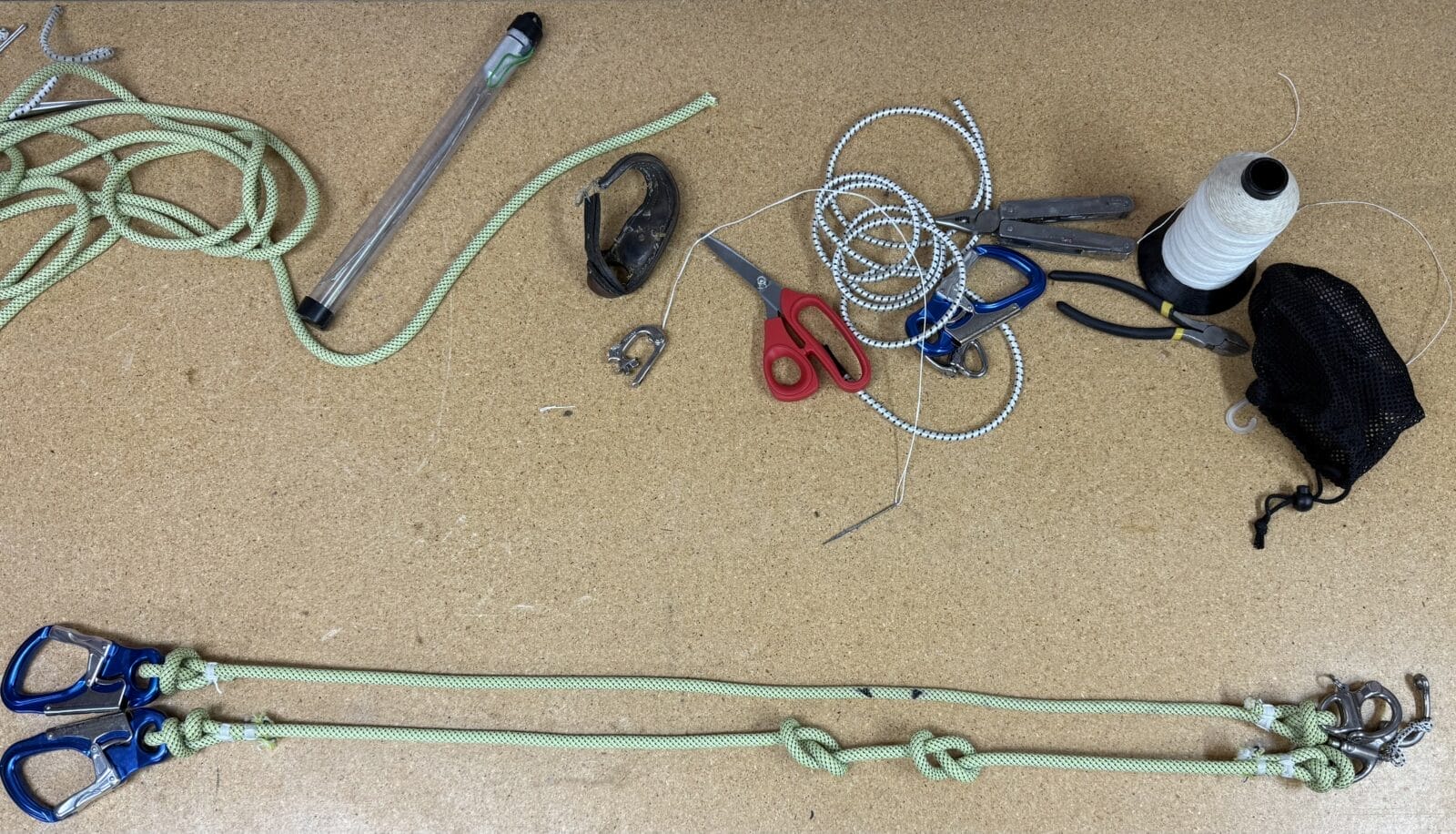
As we have discussed at length in our Online Book on Crew Overboard Prevention, tether length is critical to a safe system, which is why I roll my own.
Too long and we up the risk of being drowned by dragging, but too short will make it impossible to sail the boat properly and/or result in an excessive number of tether changes—our system has multiple tethers that stay attached to the boat.
Login to continue reading (scroll down). Paid membership required:
Nice approach John. Another great knot for that application is an alpine butterfly because a single knot can tune the tether to an exact length. It’s adjustable in a way that a fig 8 is not. Not a common sailing knot, but used a lot in climbing as it allows a 3 way load.
Hi Mike,
Sure, during testing that would work too, although I would not want to see it on a tether in actual use, see my comment to Floris. Still, wouldn’t just adding the figure 8s to a longer tether until we get the right length be faster and easier than working and reworking an alpine butterfly?
Why not use a length adjustable system like used in mountaineering. For example the Petzl „connect adjust“?
Hi Floris,
Sure that could work, but my thinking is that the tether should be fixed at a safe length. If we can lengthen it from that safe length then it will always be easy, particularly in the heat of the moment, to have it too long and get dragged. Keep in mind that I just did the above to arrive at a safe but functional length, and then built the upper tether to conform to that.
Another good article.
I had custom length tethers on my cat; the 2-meter length wouldn’t reach everywhere I needed to go, and the 1-meter length was too long for the side decks. Yes, my trial tethers were all knotted, until I got the lengths right. On the other hand, the standard 1- and 2-meter legs are perfect for my trimaran … depending, of course, on how you run the jacklines and place the hard points!
I have used adjustable tethers in climbing and rope access situations. I think they are too fiddly for sailing. I also like to actually use both legs to different points in some situations, like when the bow is playing submarine
A tip for 2-leg tethers. Clip the 2-meter leg behind your back, like a belt, when not in use. This keeps it out from under foot and out of the way of grinding. Also, remember that if you clip the spare leg to the harness instead of the tether (add a small parking loop if needed) you have defeated the quick release feature; this practice was implicated in one fatality I know of.
—
I’m due to make or buy a new tether. The elastic in the long leg of my favorite has died. I hate buying one, when I have so many good clips. Time to re-think construction methods again. On the other hand, the Kong Double is a good value.
Hi Drew,
Thanks for the fill on variable length climbing tethers. That was my gut feeling but good to have confirmation from someone who actually knows.